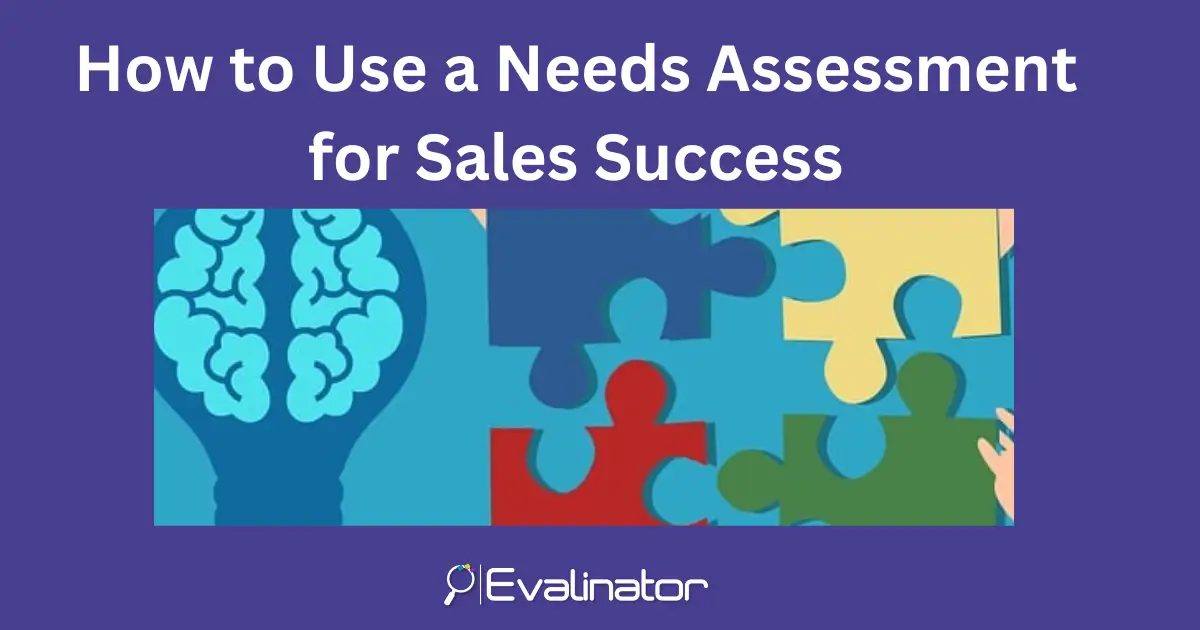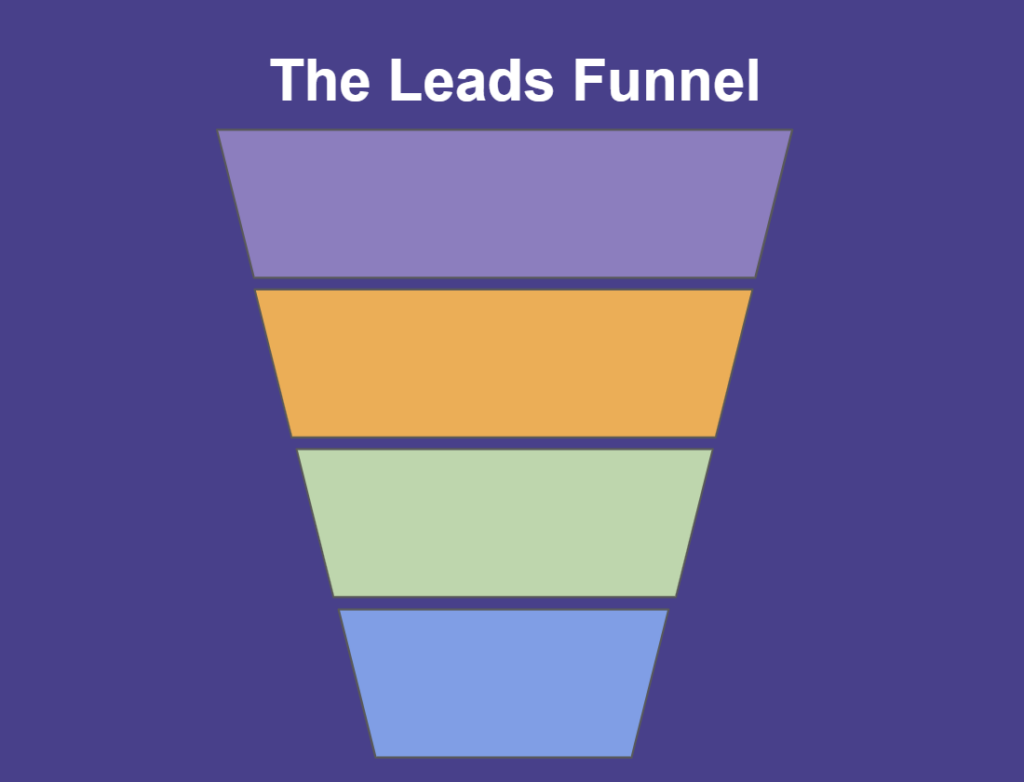


Understanding your client’s needs well generates actionable next steps from your sales interactions.
A needs assessment or needs analysis goes beyond sales qualification (budget, authority, need, timing, etc.). It enables you to uncover pain points, challenges, and aspirations of your prospects so you can personalize your follow-ups.
You can use a needs assessment with prospects, and also to expand an existing client relationship.
In this blog post, we will describe:
Note: Evalinator offers a customizable digital needs assessment that integrates with your CRM (HubSpot, Pipedrive, Salesforce, etc.)
Making inaccurate assumptions about client needs is a common issue that causes sales cycles to stagnate. And you can end up spending too much time without closing them.
A needs assessment is a simple and fast investigation that helps you better understand what your clients need.
It guides you to ask questions, gathers important information, and presents the results in a way that is appealing to the clients.
The insights you generate on challenges and aspirations help you engage the client in a dialog. You can personalize your pitch and make it very relevant. This results in high quality next steps and follow-ups.
Think of your client interaction this way: you’re building a puzzle. You know what the individual pieces do, but you don’t have the big picture on the box to show you what the pieces add up to. A needs assessment is like collecting all the missing puzzle pieces. By asking questions and listening carefully, we can find out what pieces are missing and what we need to do to complete the puzzle.
When we do a needs assessment, we want to know things like:
By finding out these answers, we can understand how to help and come up with a targeted offer.
For example:
The important thing about a needs assessment is that it helps you use the big picture to zoom in and can provide the right help at the right time.
Here is a sample needs assessment (opens in new window).
As a result, a needs assessment helps you deliver a more targeted value proposition.
You will have a higher chance of resonating with the clients.
A needs assessment mindset leads to more relevant and fruitful meetings.
It follows that you will also have higher than average sales conversions.
A successful needs assessment generate 5 key benefits.
Let’s briefly explore each component and its significance, along with practical examples:
To effectively address your client’s needs, it is essential to identify the areas where they are facing challenges and pain points.
By understanding their pain areas, you can then offer targeted solutions to alleviate their specific root causes.
Examples:
Each of the above areas needs a different initial offer.
And by analyzing these needs you also project your expertise to the clients.
Success criteria help define the specific objectives and desired outcomes your potential client wants to achieve.
By understanding their success criteria, you can align your solutions with their overarching goals and better demonstrate the value your offerings can provide.
Examples:
Understanding your client’s previous attempts to address their challenges provides valuable insights into what has been tried before.
By exploring their past efforts, you can learn from their experiences, build upon successful approaches, and avoid repeating unsuccessful ones.
Example:
By understanding their past efforts, you can gauge the level of success, challenges faced, and adapt your approach accordingly.
Learning from what has worked or not worked in the past helps you refine your approach and tailor your solutions to your client’s needs.
By understanding their experiences with previous solutions, you can provide more effective recommendations and avoid potential pitfalls.
Examples:
This is an issue that blind sides most sales persons. Eager to move forward, we ignore these issues which are more common than we’d like to admit.
Internal hurdles, such as roles and responsibility overlaps, or resistance to change can impact the implementation of new solutions.
By identifying and addressing these potential hurdles upfront, you can proactively develop strategies to overcome them and ensure smooth adoption of your proposed solutions.
Example:
Each of the above five benefits of the needs assessment accelerates your sales cycle by understanding your potential client’s unique situation.
By exploring these aspects and tailoring your approach, you demonstrate a deep understanding of their challenges and position yourself as a trusted partner who can provide relevant solutions.
Now let’s dive into the key differentiator for a successful needs assessment – how we can tailor it.
Each stakeholder you engage with has specific key performance indicators (KPIs) within their functional or business area. It is crucial to ask the right questions that align with their roles, responsibilities, and objectives.
For example, a needs assessment conducted for IT services sales will be different for each target role. These roles could include a business head, CIO, VP of Analytics or Application Development, or an Enterprise Architect. Each of these roles will be looking at the problem from a different angle.
Understanding these nuances and customizing your approach will enable you to establish a stronger connection and address their unique needs effectively.
Tailoring a needs assessment involves asking questions that are relevant and meaningful to each stakeholder.
A needs assessment should also play to your strengths and offers.
To conduct a needs assessment efficiently and facilitate collaborative analysis, we first have to create it!
Creating a needs assessment on Evalinator is very simple.
You just need to know what questions to ask.
So here are the steps:
Once you have taken the assessment, you can either display the results to the client right then, or send a secure link to your clients. That makes for a very good follow-up too. Clients can then actively engage in the analysis and next steps.
The first meeting with a prospect is commonly known as the initial discovery session. During this session, a needs assessment can be used interactively and is very powerful.
The salesperson can ask targeted questions and actively listen to the client’s responses.
This approach allows for real-time interaction and immediate exploration of pain points, challenges, and aspirations. Platforms such as Evalinator can allow immediate insights to be shared with the clients.
This has a high chance of generating a follow-up meeting because you are sharing important insights with your clients.
Sending an online assessment to be filled out before a meeting help your clients reflect on their needs better. It works best when the client is eager to see how you can help them.
Then you can access the results during the meeting and build on it. Otherwise, you will waste valuable time during the meeting gathering information.
The assessment can be designed with a user-friendly interface and easy to answer questions. The questions should be extremely relevant to your meeting. It should make it easy for the client to answer question.
A pre-meeting questionnaire ensures that both the salesperson and the client have a common context.
You will review the client responses at the start of the meeting as a starting point.
Conducting the needs assessment during a meeting can be an very effective. It allows the salesperson and the client to engage in a collaborative conversation.
In this scenario, the salesperson walks through a set of questions that map to the stakeholder’s specific role. This approach enables them to provide immediate value to clients and identify potential next steps.
The key is being well-prepared with a set of tailored questions that align with the stakeholder’s role and objectives. These questions should clearly help uncover pain points and challenges. They should also be aligned with the specific offers that you aim to present to the client.
Throughout the assessment process, it is crucial to not make it sound like an interrogation. We must actively involve the client and encourage their participation.
The art of conducting a needs assessment lies in showing curiosity, active listening, and tailoring your approach. By mastering this skill, you can have meaningful conversations, build stronger relationships, and drive successful outcomes. Read the blog on consultative selling for more insights.
If you’d like to create a needs assessment, sign up and use our many templates to create one quickly.
Take advantage of our free trial to give it a shot and improve your sales outcomes. If you need any customizations, we are here to help.

Feeling frustrated with lead generation?
Take this free, 5-minute quiz and get more prospects into your leads funnel.
Instant Results. Actionable recommendations. Email required.
Find Your Score >>